How To Optimize Your Pre-Sales Support Workflow
Organizations need to keep growing to thrive. That growth depends on a team of sales representatives that take prospects from leads to closed deals. Often, that process relies on a sales rep identifying potential objections and squashing them.
But, sometimes, sales reps need backup. Some prospects need the right piece of content to push them down the pipeline, or they have a technical question that can only be answered by an expert. In these situations, sales representatives rely on other departments for backup. That’s what pre-sales support workflows are about. Now how can you get yours working at its best?
Even the best need backup sometimes
Your sales representatives are some of the most knowledgeable people in your organization, but even they can’t know everything. If you’re selling a software product, a prospect with an engineering background may have a question that only another engineer could answer. Similarly, if you’re dealing in specialized legal services, that expert help can only come from someone in the legal field.
Not all pre-sales support requests need a subject matter expert, though. Sometimes, it’s about having the right piece of collateral on hand, like a demo. That’s usually when a sales rep needs help from marketing.
Everyone wants the sales team to succeed. When this workflow is working right, your sales reps always have the information they need when they need it.
So why does this workflow fall apart so often?
The workflow without Unito
When this workflow fails, your organization loses money. Plain and simple. Closing a sales deal is a matter of timing. Sometimes, your sales representatives have narrow windows in which to operate, where quick action and the right support from another team can make the difference between a closed deal and a loss.
So if everyone understands the importance of these requests, how can this workflow fail? Because of the difficulties inherent to cross-team collaboration. The teams that need to support sales reps don’t always know how and where to provide support. After all, they have their own goals, tasks, and initiatives. If there’s no dedicated channel or process for support requests, they can fall through the cracks, leading to frustration and disappointment on both sides.
This is exacerbated by tool differences. Salespeople live in CRM software like HubSpot and Salesforce. It just makes sense; these platforms are designed to track a lead’s progress through the pipeline. While some of these have features that can be useful for other teams — like HubSpot’s email marketing — they don’t necessarily work for everyone else. Can a developer track and complete their work in HubSpot? What about a marketer with Salesforce? Not really. And where you have a tool difference, you have frustration, lost productivity, and troubled communication.
Where Unito comes in
This workflow needs two things to work right: transparency and efficiency. When pre-sales support teams can see the impact they have, there’s more of an incentive to go the extra mile. If a piece of collateral is the only thing standing between a prospect becoming a new customer and churning, and the person who created it can see this happen, you can bet they’ll be ready to make more. Conversely, it’s not ideal for every pre-sales support request to hop around multiple communication channels or go through three status meetings before it’s seen. Not only can the request fall through the cracks, but it can also become irrelevant by the time it reaches its destination.
When you use a workflow management solution like Unito, you nip this problem in the bud. By combining a simple, drag-and-drop workflow designer with the market’s deepest two-way integrations, you’re not only giving your teams a visual way to understand the path a pre-sales support request has to take, but you’re also eliminating the tool difference. Your sales team’s CRM stops being a tool silo from which information can only escape through chat or email. Instead, every request made from a CRM can be automatically sent to the appropriate team’s work management tool of choice, and that team can interact with that request from there rather than having to leave their tool.
So what does this look like in practice?
Handling pre-sales support requests from HubSpot in ClickUp and Jira
For this example, let’s assume an imaginary sales team works in HubSpot. Every aspect of the deal is handled through this CRM, from the initial intake of a potential lead to the closed deal. The sales team is selling a SaaS solution, and they rely on developers and marketers for support. The developers work in Jira while the marketers are all about ClickUp. How can a sales rep avoid the chat-and-email gymnastics and get their questions answered without leaving their tool?
It all starts with building out your workflow in Unito. When you first sign up, you’ll be taken to the workflow designer and prompted to add a block of work.
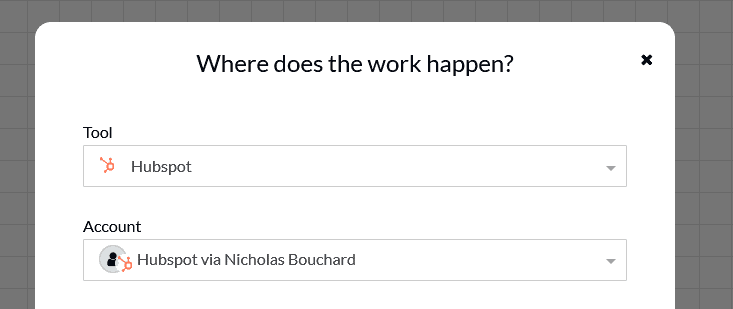
Start by adding a block for your HubSpot instance, then do the same for the ClickUp and Jira projects your marketers and developers use for support requests.
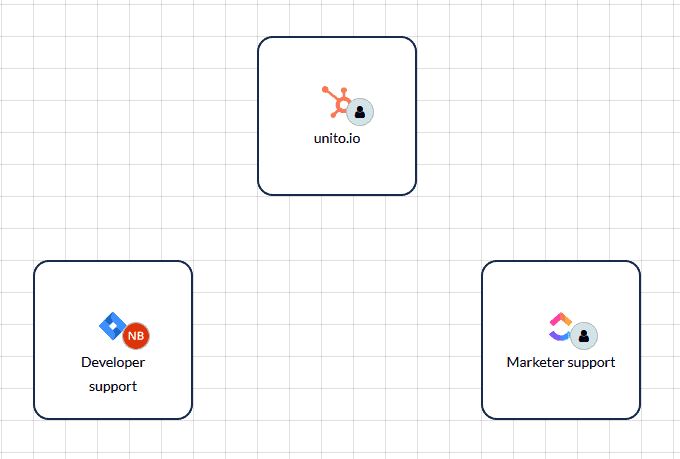
After that, you’ll want to click on the edges of the HubSpot block, where blue handles appear, and draw lines from it to the ClickUp block.
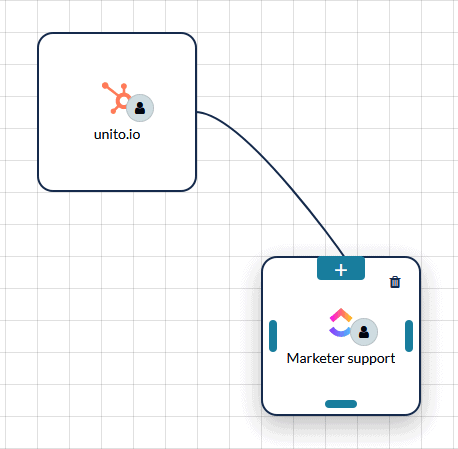
Then do the same for the Jira block to map out your workflow
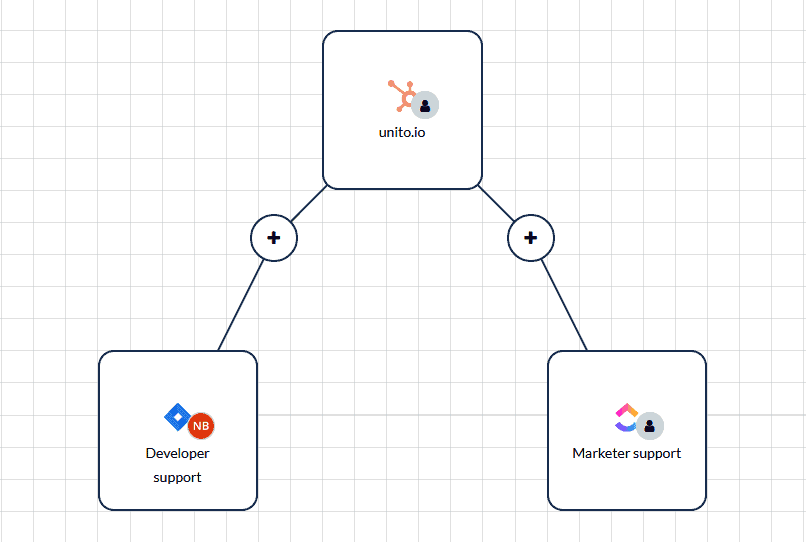
Now that your workflow is mapped out, it’s time to get your flows working. Start by clicking on the plus sign for the HubSpot-Jira flow. From there, you can tinker with the settings to get the behavior you need.
For the most part, Unito’s default settings can handle this use case. The only exception is the rules we need to build to make sure requests end up in the right place. Here’s how that’s done with the HubSpot-Jira half of this workflow.
First, you’ll want to create a label called “Developer support” in Jira. In HubSpot, you’ll want to create an assignee called “Friendly Developer.” After that, when you get to the “Rules” tab in the flow editor, you’ll want to add a new trigger, choosing the “Labels” option. In the next dropdown, pick the “Developer support” label. Add a trigger on the HubSpot side as well, this time choosing “Assignees.” From there, pick the “Friendly Developer” assignee.

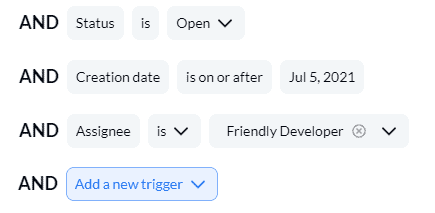
Why is this needed? Rules allow you to tailor the flow of information between your tools. With this in place, only tasks with the “Developer support” label or the “Friendly Developer” assignee will be synced between HubSpot and Jira. Otherwise, your sales reps would get a bunch of unnecessary Jira tasks in their CRM software.
From there, you can rely on Unito’s default settings and you’re done!
Replicating these steps for ClickUp means only the tasks requiring marketing support will end up traveling between ClickUp and HubSpot. Otherwise, you’ll see Jira tasks lend in ClickUp, and vice versa.
Because Unito scales with your organization, you could potentially add blocks for every single team your sales reps depend on, no matter where they are in the organization or what tool they’re using.

Close more, worry less
Your sales representatives don’t have to stay trapped in their CRM. When they need help, they should be able to get it when they need it. It also shouldn’t feel like extra work for other teams, when usually it’s as simple as typing a few lines or providing collateral that’s already been created. With Unito, you can get your teams working together as one, no matter what tool they’re using or what their workflow looks like.
1. Ready to start? Try Unito free for 14 days!
2. See the power of Unito in action.
3. Read more about what Unito can do for your workflow.
